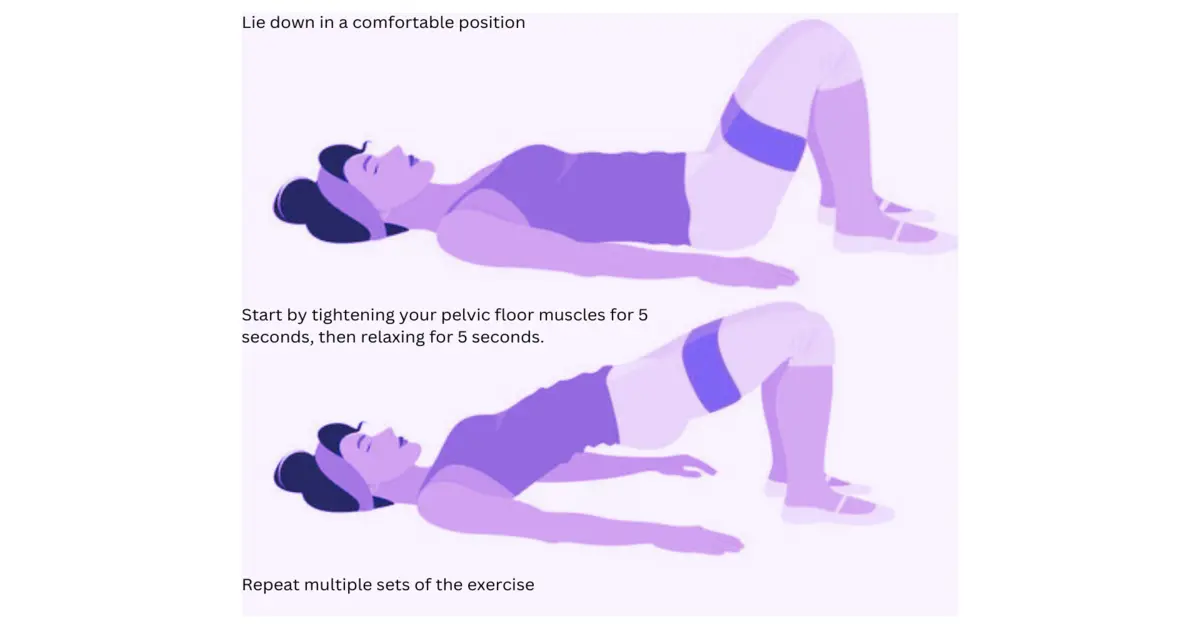In a world where fitness trends come and go, one exercise routine has stood the test of time and remains essential for both men and women—Kegel exercises. These discreet, yet powerful pelvic floor exercises offer numerous benefits, from improving bladder control to enhancing sexual satisfaction. In this comprehensive guide, we will delve into the world of Kegel exercises, exploring their benefits, techniques, and frequently asked questions. Get ready to embark on a journey toward a stronger pelvic floor!
Table of Contents:
- Understanding the Pelvic Floor
- The Importance of Strong Pelvic Floor Muscles
- What Are Kegel Exercises?
- How to Perform Kegel Exercises
- Benefits of Kegel Exercises
- Kegel Exercises for Men
- FAQs: Your Kegel Questions Answered
Understanding the Pelvic Floor
Before we dive into the details of Kegel exercises, let’s start with a comprehensive understanding of the pelvic floor.
What Is the Pelvic Floor?
The pelvic floor is a group of muscles, ligaments, and connective tissues that form a sling or hammock at the base of your pelvis. It plays an important role in supporting various organs, including the bladder, uterus, and rectum.
Function of the Pelvic Floor:
These muscles have several important functions, such as:
- Support: They provide essential support to the pelvic organs, preventing them from dropping or sagging.
- Control: The pelvic floor muscles are responsible for controlling the release of urine and stool.
- Sexual Function: They contribute to sexual function by facilitating blood flow to the genital area and enhancing sexual pleasure.
Understanding the anatomy and function of the pelvic floor is fundamental to appreciating the significance of Kegel exercises.
The Importance of Strong Pelvic Floor Muscles
Having a strong and healthy pelvic floor is vital for both men and women. Let’s explore further to understand
Bladder Control: One of the primary reasons for focusing on pelvic floor health is to maintain proper bladder control. Weak pelvic floor muscles can lead to urinary incontinence, a condition that affects millions of people worldwide, especially women.
Pregnancy and Childbirth: For women, strong pelvic floor muscles can make pregnancy and childbirth more manageable. During pregnancy, these muscles support the growing uterus. After childbirth, they aid in the recovery process, helping women regain strength in the pelvic region.
Sexual Function: Strong pelvic floor muscles contribute to improved sexual function in both men and women. For women, these muscles play a role in achieving orgasm and controlling vaginal tightness. In men, a robust pelvic floor can help with erectile function and ejaculation control.
What Are Kegel Exercises?
Kegel exercises, named after Dr. Arnold Kegel, are a series of exercises designed to target and strengthen the pelvic floor muscles.
How to Perform Kegel Exercises:
-
1. Identify the Right Muscles: The first step is to identify the pelvic floor muscles. These are the muscles you use to stop the flow of urine or to prevent passing gas. Try stopping your urine midstream to get a sense of which muscles you need to contract.
-
2. Find a Quiet Place: It’s usually best to perform Kegel exercises in a quiet and private place to help you focus on the movements.
-
3. Get Comfortable: Sit, stand, or lie down in a comfortable position. Some people prefer to start by lying down, especially if they are having trouble isolating the correct muscles.
-
4. Empty Your Bladder: It’s a good idea to empty your bladder before starting Kegel exercises.
-
5. Contract the Muscles: Contract your pelvic floor muscles. Imagine you are trying to stop the flow of urine. You should feel a pulling and lifting sensation in the pelvic area. Be sure not to tighten your abdomen, buttocks, or thigh muscles during this process. Concentrate solely on the muscles in your pelvic floor.
-
6. Hold the Contraction: Hold the contraction for 3-5 seconds, or as long as you can comfortably manage. Ensure you continue to breathe during the exercise; don’t hold your breath.
-
7. Relax the Muscles: Release the contraction and relax the pelvic floor muscles for an equal amount of time, or for as long as you held the contraction.
-
8. Repeat: Perform a set of 10-15 repetitions. Gradually work your way up to 3 sets of 10-15 repetitions each day.
-
9. Consistency is Key: Like any exercise, consistency is important. You may not notice immediate results, so keep up with your Kegel exercises over time.
-
10. Avoid Overdoing It: Do not overexert yourself. If you experience discomfort or pain, you may be doing the exercises too vigorously. It’s important to be gentle with your pelvic floor muscles.

Progressive Kegel Exercises:
As you become more experienced with Kegel exercises, you can gradually increase the duration of contractions and the number of repetitions. Advanced variations may involve using resistance tools designed for Kegel exercises.
Benefits of Kegel Exercises
Kegel exercises offer a wide range of benefits, and these benefits are often linked to the strengthening of the pelvic floor muscles.
Improved Bladder Control: Perhaps the most well-known benefit of Kegel exercises is improved bladder control. This can help reduce or eliminate urinary incontinence, a condition that can be particularly troublesome for women after childbirth or as they age.
Enhanced Sexual Satisfaction: Strong pelvic floor muscles can lead to enhanced sexual satisfaction for both men and women. Women may experience increased vaginal tightness and improved orgasms, while men may find that they have better control over ejaculation.
Reduced Risk of Pelvic Organ Prolapse: Pelvic organ prolapse is a condition where one or more pelvic organs, such as the bladder, uterus, or rectum, droop or protrude into the vaginal canal. Strong pelvic floor muscles can reduce the risk of this condition.
Faster Postpartum Recovery: For women who have recently given birth, Kegel exercises can expedite postpartum recovery by strengthening the muscles that may have been stretched or weakened during pregnancy and childbirth.
Stronger Core Muscles: The pelvic floor is an integral part of the core musculature. When you make these muscles stronger, you can boost your core strength and stability in general.
Kegel Exercises for Men
While Kegel exercises are often associated with women’s health, they are equally important for men. Here’s how men can benefit from incorporating Kegel exercises into their fitness routine:
-
Enhanced Bladder Control: Just like women, men can also experience urinary incontinence, especially as they age. Kegel exercises can help improve bladder control, reducing embarrassing leaks.
-
Treatment of Erectile Dysfunction: For men dealing with erectile dysfunction (ED), Kegel exercises can be a valuable addition to their treatment plan. These exercises improve blood flow to the pelvic region, potentially enhancing erectile function.
-
Improved Sexual Stamina: Men who want to prolong their performance in the bedroom can also benefit from stronger pelvic floor muscles. By developing greater control over ejaculation, men can enjoy longer-lasting sexual encounters.
Conclusion
Incorporating Kegel exercises into your daily routine can lead to a stronger pelvic floor, improved bladder control, and enhanced sexual satisfaction. Remember that consistency is key, and with dedication, you can unlock the full potential of your pelvic floor muscles. Say goodbye to worries about incontinence and hello to a healthier, happier you!
FAQs: Your Kegel Questions Answered
Q1: How long does it take to see results from Kegel exercises?
Results can vary from person to person, but many individuals notice improvements in bladder control and sexual satisfaction within a few weeks of consistent practice. For significant changes, it may take several months of dedicated effort.
Q2: Can I do Kegel exercises during pregnancy?
Yes, Kegel exercises are safe during pregnancy and are often recommended by healthcare professionals. These muscles can get your pelvic floor ready for childbirth and assist in recovering after giving birth.
Q3: How often should I do Kegel exercises?
Aim for three sets of ten repetitions per day when starting. As you become more experienced, you can adjust the frequency and intensity to suit your needs.
Q4: Are there any side effects of Kegel exercises?
Kegel exercises are generally safe, but doing them incorrectly or excessively can lead to muscle fatigue or soreness. If you experience any discomfort, consult a healthcare professional for guidance.




I am truly thankful to the owner of this web site who has shared this fantastic piece of writing at at this place.